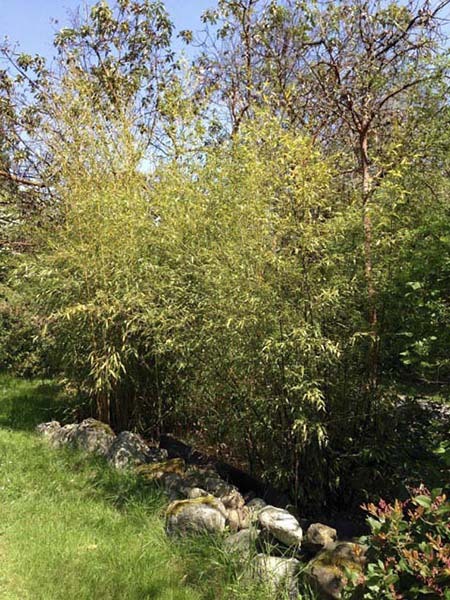By Toni Shiurba
Special to the Weekly
Want to win first prize at our upcoming County Fair?
Then it’s time to put on your gloves and fertilize your dazzling perennial shrubs. With an optimistic outlook, I’ve planted lilac colored dahlias, deep pink peonies and a fascinatingly fragrant foxtail lily (Eremurus stenophyllus).
Personally, I’d like to figure a way to enter my incredible Phyllostachys nigra, or his older brother Phyllostachys aureosulcata Spectabilis.
Three years ago, wild bird bamboo had a booth at the fair, and as my friend John Stamey rattled on, it struck me. I stared at his containers of waving wonders.
Quickly I conjured up a new idea for the island between my driveway and the main dirt road I live on. Dust storms billowing from behind all the unthinking people speeding somewhere in a great hurry was the problem I had to solve.
One bamboo specimen Stamey was selling was incredibly lovely. I had to give it a try.
I prepared a deep hole, meticulously planning to contain my yellow bamboo, and lined it with a thick rhizome barrier to keep the roots prisoner. No escapees.
The stalks have risen to 15 feet tall and several feet in width-all in three years. It is a stunner of bright yellow culms (stalks) with a green sulcus (indent on the stalks). My beautiful Phyllostachys Spectabilis.
The next year, I found his brother-the black stalked Phyllostachys nigra. Jet-black stalks contrasted by feathery leaves makes this Timber Bamboo my favorite. Slow to grow at first, it has the capacity to tower 35 feet.
Now, all that digging, toiling and sweat has resulted in a sweet reward. The Spectabilis, or “yellow bamboo,” formed the dense forest I had hoped it would and given me bamboo stakes for my peas and tomatoes to boot. The black stalks of his neighbor are gaining height and girth.
Referred to taxonomically as a “Tribe,” these flowering perennial evergreen plants are part of the grass family. They are a haven for the songbirds I love to watch. Yellow finches, red-winged blackbirds, orange crossbills, chickadees and others sit and preen on the feathery branches.
The deer don’t seem to nibble on it, and it’s impressive to watch it grow, and I now have a living dust fence. I’m designing a sign for my new Salish Seas Jewelry business out of both types of bamboo to highlight my Northwest Indian inspired creations.
Come to the fair on Friday and Saturday in the main building and ask me about growing bamboo.
My brother is a biologist and scientific innovator who works and lives in Japan and, being the smart one, he teaches me many things. Recently, he said, “Toni, you need to grow take-no-ko,” which is the common Japanese name for several species of bamboo.
Light bulb. A beautiful, edible perennial plant to add to my growing dust shield. I can see myself standing, mattock in hand, flinging dirt left and right in one more place.
Now where did I put those chopsticks?
— Editor’s note: A 35-year resident of San Juan Island, Toni Shiurba is a math tutor, maker of jewelry and a recent graduate of WSU Master Gardener’s course.




